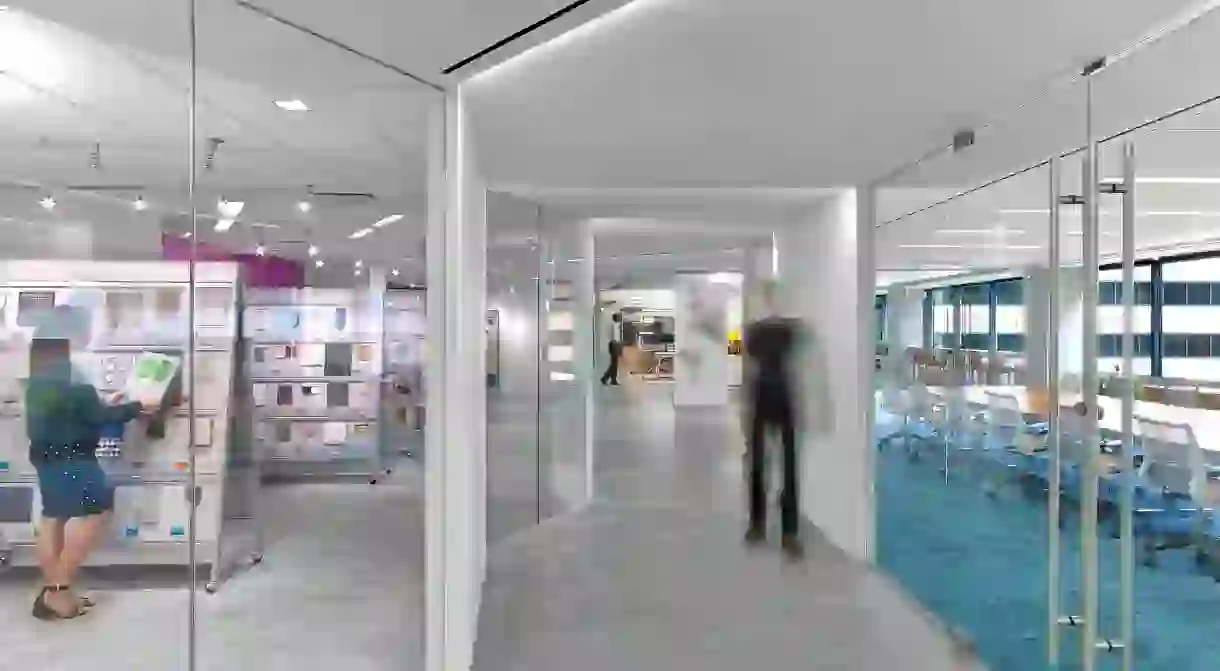Inside the World's Greenest, Healthiest Building

While everything may not be climate-conscious in the nation’s capital right now, one building has clearly taken the progressive path towards extreme ‘mindful’, green architecture.

The greenest, healthiest office space in the world is now officially The American Society of Interior Designers’ (ASID) headquarters in Washington, D.C., after it was awarded both LEED and WELL Platinum Certification on June 9.
While the LEED (Leadership in Energy and Environmental Design) criteria analyzes the energy efficiency and sustainability of a building, the WELL certification examines how structures affect humans from a wellness perspective, using research-based strategies to advance happiness, productivity, and mindfulness. These Platinum Certifications are the highest ‘green’ honors a building can receive, and no other building in the world has received both.
So what makes this 8,500 square-foot office space so energy efficient and mindful? Designed by Perkins+Will, a prestigious New York-based firm, sustainability and wellness were at the core of the design philosophy. The WELL inspectors “monitored ASID’s ‘living laboratory’ in action [and gathered] data on everything that impacts human health and well-being in the built environment: air, water, nourishment, light, fitness, comfort, and mind.”

For starters, the ASID headquarters utilizes biophilic design, which stems from a philosophy that emphasizes the fundamental, hard-wired human need for connection with the natural world. Biophilia design is about incorporating aspects of nature into our spaces to promote wellbeing, and these measures also increase air quality and reduce stress in the work environment. The term ‘biophilia’ was coined by author Edward Wilson, who argued that our “natural affinity for life—biophilia—is the very essence of our humanity and binds us to all other living things.”
The design also includes sound masking systems, a circadian lighting system that helps regulate the body’s natural physiological processes, sit/stand workstations, and rigorous water standards. In addition, the ASID provides daily fresh vegetables and fruit to its employees, and offers a ‘wellness room’ to provide mental breaks throughout the day. In short, it’s a space that recognizes the entire human as a breathing, natural, conscious being.

The office is considered a “living laboratory for the design community,” with pre-/post-occupancy research being conducted on the site to evaluate the overall job satisfaction of the employees. Research by Cornell University has shown that employee satisfaction on the “environmental quality of the office” has increased significantly, as well as “perceived support by the organization” and “organizational productivity.”
While it’s well known that LEED-certified buildings are resource and energy efficient, they also tend to save money in the long run. And with new research coming out that supports how these sustainable and wellness standards increase productivity, perhaps all companies should be looking into ways to invest in more green initiatives.














